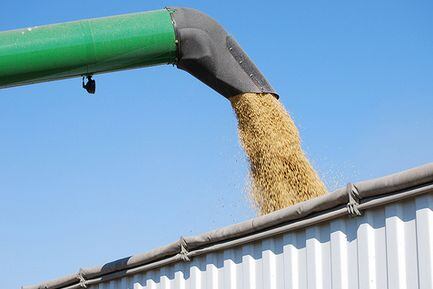Speaking to FoodNavigator-USA after the FDA agreed to extend the deadline for comments on its proposal until March 8, consultant to the Qualisoy board and oils expert Richard Galloway said: “Our formal comment to FDA will likely include specific examples.”
However, should the FDA decide to ban PHOs, it should set a reasonable time frame he said, noting that about 16% of soybean oil used in food production in 2012 was still partially hydrogenated (about 2bn lbs out of 12.3bn lbs), although this compared with 50% in 2004.
He added: “Labeling of the trans fat content of packaged food products became effective roughly two years after the regulations were finalized, and it took over a year to finalize those regulations. Food companies and their suppliers will take a similar time frame to adequately develop and implement substitutes for PHO, if all PHOs must be replaced.”
Interesterified oil a great alternative to PHOs, but seeing it on the label puts consumers off
He added: “We should be careful to not exaggerate the health impact of the very small amount remaining; nevertheless, the edible oil industry is poised to provide replacements if required to do so and if adequate time is allowed.

“For instance, interesterified oil [where the structure of liquid oils is altered via chemicals or enzymes to make them more solid or/and more stable] is an ideal substitute for almost all PHO still being used, but the production capacity is not in place to meet that much demand.
“Given the current FDA requirement to use ‘interesterified’ or ‘fully hydrogenated’ on the ingredient label discourages food companies from embracing this very functional and relatively healthy alternative [fully hydrogenating oils - as opposed to partially hydrogenating them - does not create trans fat].”
PHO alternatives
But why are firms still using PHOs given that alternatives have been in place for some time?
Several reasons, he says: “One, they just work better in some applications where you need a highly specialized melt curve that you don’t get with naturally more solid fats like palm oil or lard. Second, some people don’t want to switch to palm-based products and increased saturated fat content and third: Cost, especially in some foodservice applications.

“For frying, some foodservice players switched to high oleic canola - which is great but not right for every application and the volumes are still quite limited and have plateaued; some switched to sunflower oil - which is more expensive; and some switched to basic soy salad oil and, but you need to get rid of it faster, and it doesn’t have the same oxidative stability.”
3bn lbs of next generation high oleic soybean oil likely available by 2018/19
So what about the next generation of high oleic oils developed from soybeans from Monsanto (Vistive Gold) and DuPont Pioneer (Plenish)? Will these ‘solve’ the PHO problem? And when will they be widely available?
The 2014 crop (which will be harvested in the fall) will generate around 100m lbs of oil, which will enter the market in early 2015, he said, with a steady ramp up expected such that in 2018/19, there should be around 3bn lbs of oil, increasing to 9bn lbs by 2023.
The price should come down as volumes reach a critical mass, and encouragingly, from an agronomic perspective, growing the seeds is no different from growing regular soybeans he said. “Price-wise, once we get to critical mass the oil will probably be around 5-7c/lb higher than soy salad oil, but it has so many advantages.
“Some US firms didn't switch to the high oleic canola because soy is just what they are used to, so they will likely switch from PHOs or soy salad oil to the new high oleic soy.”
Next generation high oleic soybean oil has much longer fry life… but zero trans fat, low sat fat, and great stability

As to PHOs, however, the new oils are not a panacea, he says.
Their key attraction for foodservice players and big snack food manufacturers is that they are stable at high temperatures, have a longer fry-life than regular soybean oil, offer a better nutritional profile (zero trans fat, and lower sat fat than regular soybean oil and much lower than palm oil), and things fried in them take up less of the oil, reducing calorie intakes from fried products, said Galloway.
But they are not simply a ‘drop-in’ replacement for PHOs in every application, he cautioned. “Really the best solution in many applications is interesterified soybean oil. This also works very well in combination with the new high oleic soybean oil.”
Click here to read more about Qualisoy, which represents farmers, seed companies, researchers, food manufacturers, soybean processors, agricultural organizations, feed manufacturers and trade associations.
